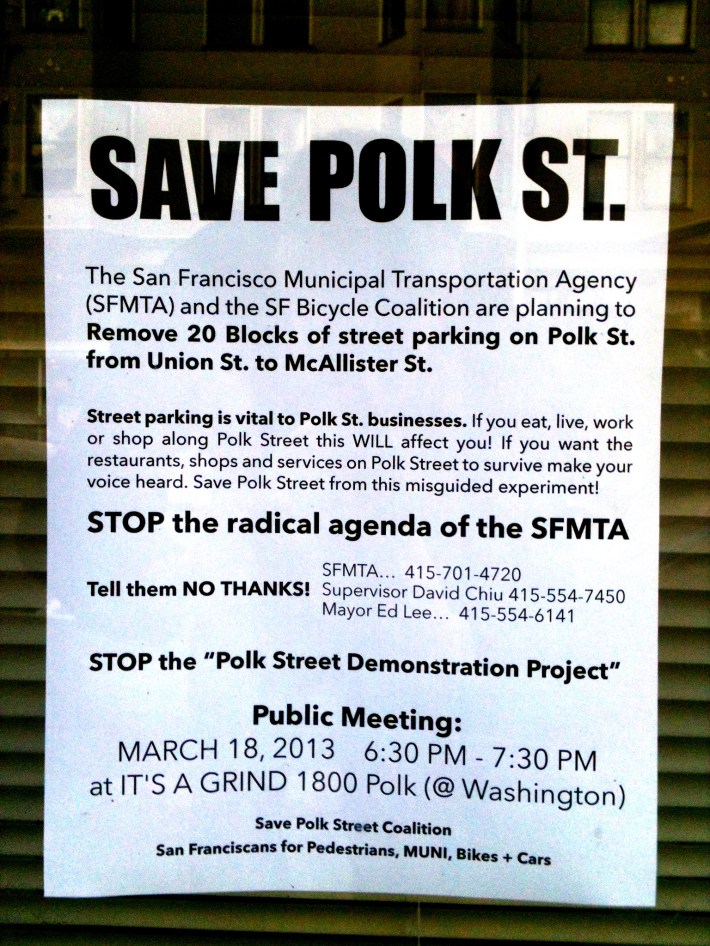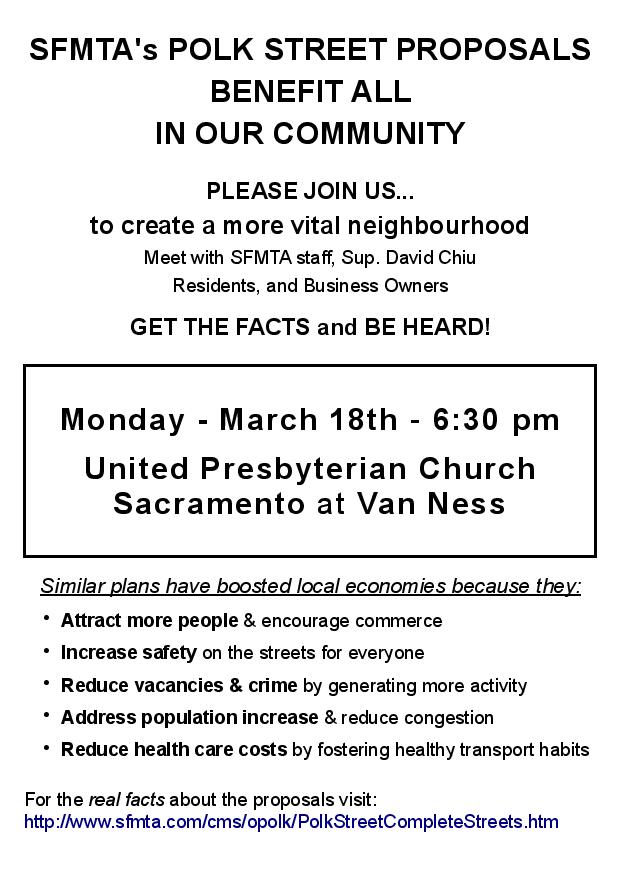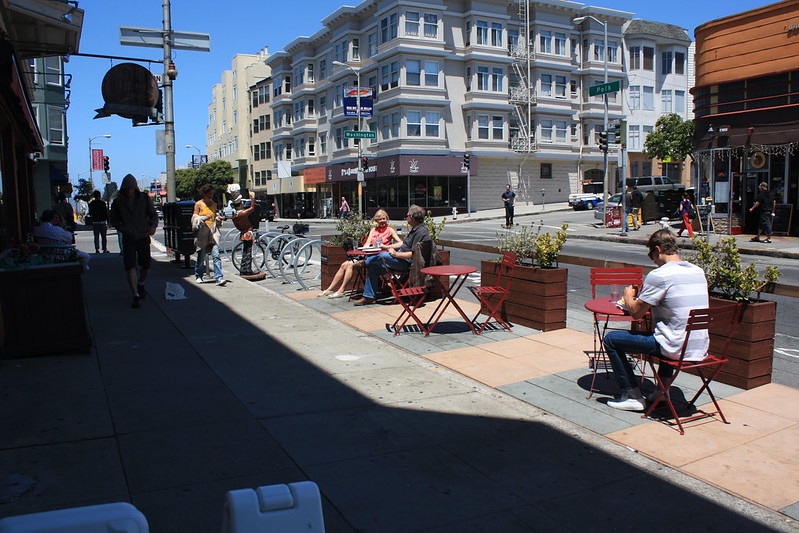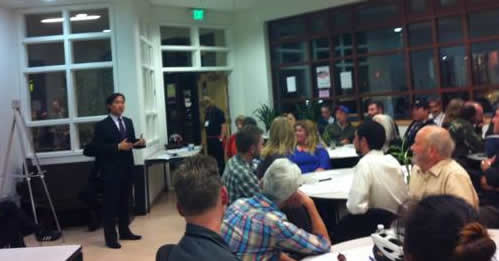With flyers stuck on storefront windows along Polk Street spreading misinformation about the SF Municipal Transportation Agency's developing plans to make the street a safer, more inviting place to walk and bike, local supporters of the project are rallying neighbors and merchants to attend a public meeting on Monday. There, city officials including SFMTA Director Ed Reiskin and D3 Supervisor David Chiu are expected to attend.
The flyers, handed out to merchants by an entity calling itself the "Save Polk Street Coalition," falsely claim that the SFMTA is "planning to remove 20 Blocks of street parking on Polk St. from Union St. to McAllister St."
In reality, the project's proposed options, which were developed with input from well-attended community outreach meetings in September and December, would only remove some portion of the on-street parking on Polk, which in total represents 7 percent of all parking within a block's range of the corridor. Meanwhile, the commercial street would receive the kind of improvements that have been shown time and time again to invite more shoppers.
Madeleine Savit, a 61-year-old mother, architect, and urban planner who lives in the neighborhood, has been talking with shop owners and attempting to debunk misconceptions about the project with a flyer of her own, which reads, "SFMTA's Polk Street proposals benefit all in our community." She said the vast majority of upset merchants seem grossly misinformed, and estimates that "Save Polk Street" is led by a handful of people.
"People don't know what's going on. So the most vocal people are the minority," said Savit. "The problem is, we're not dealing with facts. We're dealing with emotion and fear."
SF Bicycle Coalition Executive Director Leah Shahum pointed to streets like Valencia, where bike and pedestrian improvements have revitalized businesses by inviting people to spend more time on the street. "It's very clear that when other corridors in San Francisco have been studied the way Polk Street is right now, there have been great improvements not only to the walkability and bikeability, but also to the business environment and real estate values," she said.
On Polk, parklets and bike corrals that replaced parking spaces in the last couple of years have drawn more foot traffic. After a parklet was installed in front of Quetzal Cafe on Polk between Bush and Sutter Streets, a study conducted by the Great Streets Project found that more people stopped to talk or window-shop, and overall foot traffic increased.
According to the SFBC, SFMTA bike counts along Polk also increased by as much as 79 percent between 2007 and 2011.
Additionally, studies in other walkable San Francisco neighborhoods have shown that merchants often overestimate the proportion of their customers who drive, and that those customers tend to spend less money than those who walk, bike, or take transit. A 2008 study by the SF County Transportation Authority of Columbus Avenue in North Beach found that motorists accounted for only a fifth of total spending and visited half as often or less than people who arrived via other modes.
"We have heard overwhelmingly -- and the data shows -- that Polk Street is not as safe and inviting as it could be," said Shahum. "People want a Polk Street where they feel more comfortable walking, biking, strolling and shopping."
The project will be discussed at a meeting of the Middle Polk Neighborhood Association on Monday, March 18 at 6:30 p.m. at Old First Church, 1751 Sacramento Street at Van Ness Avenue.
Savit said she hopes that neighbors who are supportive -- or at least open-minded -- about the project will be well-represented at the meeting.
"I’ve gotten a lot of positive feedback from people once they know what the truth is," she said.









